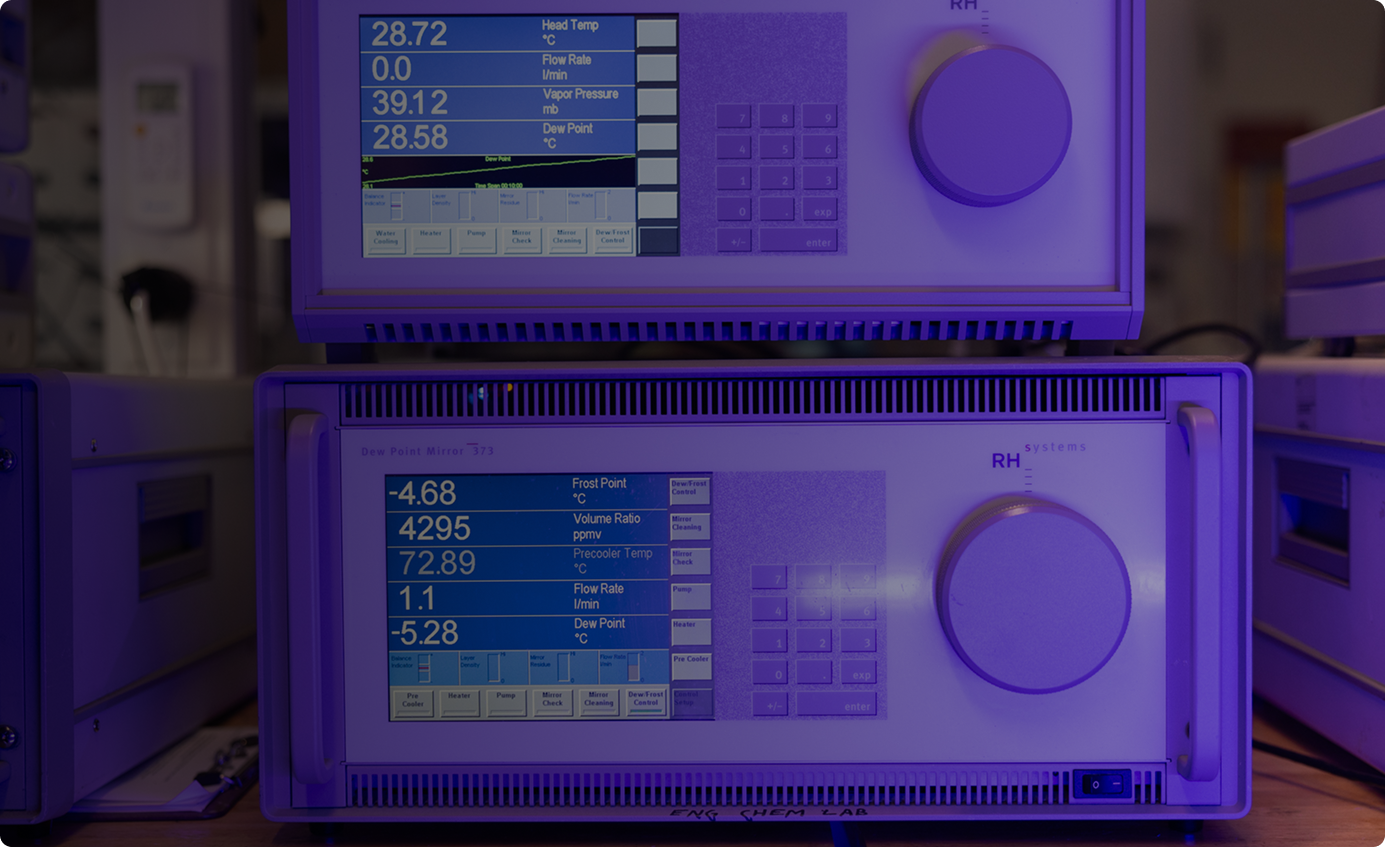
373 Dew Point Mirror
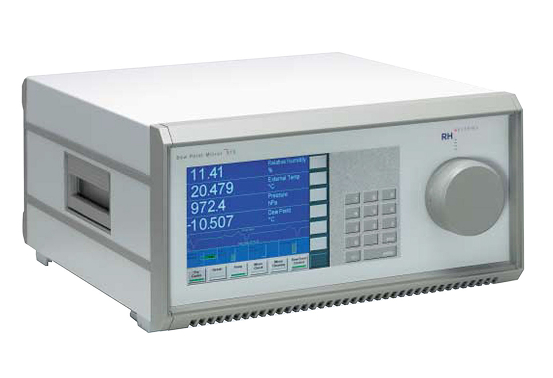
Innovative Hygrometry
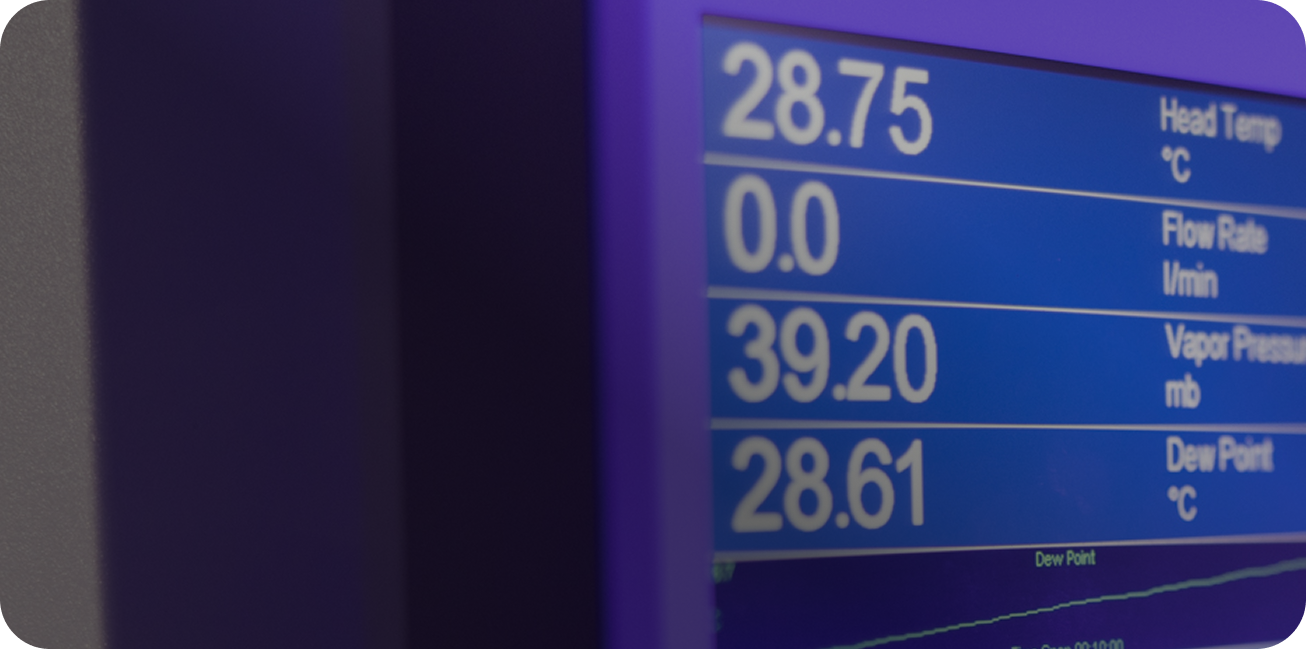
Specifications
Operation
Documents
Warranty
Accessories
Specifications
Specifications
The 373 Dew Point Mirror's specifications are outlined, below
| Model | 373LHX | 373LX | 373L | 373S3 | 373S | 373H | 373HX |
|---|---|---|---|---|---|---|---|
| Measuring range: | |||||||
| Dew/Frost point | -70 +95ºC |
-95 +20ºC |
-80 +20ºC |
-60 +20ºC |
-40 +20ºC |
-30 +70ºC |
-20 +95ºC |
| % RH @ 20C | 1–100% | 2–100% | 5–100% | ||||
| ppmv, minimum | 2.5 | 0.05 | 0.5 | 11 | 130 | 375 | 1000 |
| Thermoelectric mirror cooling: | 3-stage | 2-stage | |||||
| Cooling: | Refrigeration | Air/Water | |||||
| Measuring-head heating: | +100ºC | +40ºC | +40ºC | None | None | +60ºC | +100ºC |
| Accuracy: (Dew/Frost Point) |
± 0.1°C | ||||||
| Reproducibility: | ± 0.05°C Dew/Frost Point | ||||||
| Display: | Active Matrix Color Graphic LCD | ||||||
| Digital I/O: | RS-232 | ||||||
| Analog output: | 2 (optional 4) selectable ±10V 4 … 20mA | ||||||
| Gas couplings: | VCR Cajon 1/4″ | Swagelok 1/4″ | |||||
| Mirror temperature sensors: | PRT-100 | ||||||
| Sample gas pressure: | 35 psia (2.5 bar abs.) 150 psia (10 bar) optional |
||||||
| Sample gas flow rate: | 0.5 … 1 l/min, internal pump and flowmeter | ||||||
| Sample gas circuit: | 316L stainless steel, electropolished | ||||||
| Operation temperature: | +15 … +35°C | ||||||
| Storage temperature: | -10 … +50°C | ||||||
| Ambient humidity: | 90% RH max., non condensing | ||||||
| Voltage: | 100 … 120 VAC, 50/60 Hz or 200 … 240 VAC, 50/60 Hz |
100 … 240 VAC, 50/60 Hz | |||||
| Power consumption: | 500 W | 200 W | 300 W | ||||
| Width, inch (mm): |
17.75 (440) |
20.50 (520) |
17.75 (440) |
17.75 (440) |
17.75 (440) |
17.75 (440) |
17.75 (440) |
| Height, inch (mm): |
9.25 (236) |
10.00 (255) |
9.25 (236) |
9.25 (236) |
9.25 (236) |
9.25 (236) |
9.25 (236) |
| Depth, inch (mm): |
18.25 (461) |
19.75 (500) |
20.25 (511) |
18.25 (461) |
18.25 (461) |
18.25 (461) |
18.25 (461) |
| Weight, lb (kg): |
75 (34) |
100 (45) |
100 (45) |
45 (20) |
45 (20) |
45 (20) |
55 (25) |
Operation
Operation
The 373 Dew Point Mirror has specific facility requirements. Please read the entire 373 Dew Point Mirror manual before operating.
Documents
Documents
Learn more about our CGS-240 Humidity Generator
Warranty
Warranty
RH Systems (RHS) warrants the products it manufactures or distributes to be free of defects in material and workmanship under normal use and service when operated within the specified design limitations for a period of 12 months from date of initial shipment. Under this Warranty, RHS will, at its discretion, repair or replace any component that upon examination by RHS or its duly authorized representatives proves to be defective during the warranty period provided the system is returned to the factory for inspection and repair shipping prepaid. Improper or unauthorized maintenance, storage, repair, or alteration of any kind by personnel other than RHS or its duly authorized representatives may void all warranties. Warranty may also be voided for misuse, neglect, accident, corrosion, and improper installation. This Warranty is exclusive and in lieu of any and all other warranties of merchantability, fitness for a particular purpose, or any other warranty, expressed or implied, and all other liabilities and obligations on the part of RHS. RHS will not be liable for any other claims or damages, either direct, indirect, or consequential arising out of the use of its products.
Accessories
Accessories
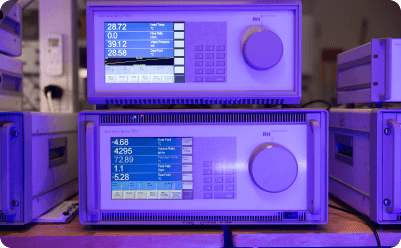
Ensure Frost With
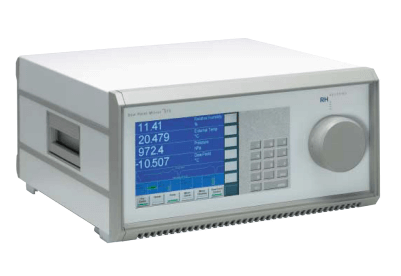
A Simpler Solution For High Dew Point Measurement

Customize Mirror Check Intervals
Let’s Chat
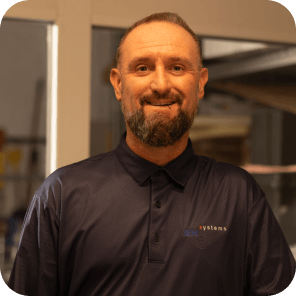
At RH Systems, we’re constantly pushing ourselves towards advancing our products and services for a wide range of clients, setting a new standard for accuracy and paving the way for future breakthroughs.
Customer satisfaction is the foundation of our reputation, so we never take a one-size-fits-all approach. We work with you to understand your needs and provide customized solutions that work seamlessly right from the jump.
Ready to chat with our Sales Team? Send an email to sales@rhs.com and we’ll get right back to you.
Let’s Connect
Frequently Asked Questions
9am – 5pm Arizona Time
1225 West Houston Ave, Gilbert, AZ 85233
As a NVLAP accredited laboratory, RH Systems is reassessed to ensure that our quality and practices maintain such standards (NVLAP Laboratory Code 600161-0). The National Institute of Standards and Technology (NIST) administers the National Voluntary Laboratory Accreditation Program (NVLAP), which accredits public and private laboratories based on evaluation of their technical qualifications and competence to carry out specific calibrations or tests.
NVLAP provides an unbiased third-party evaluation and recognition of performance. Accreditation signifies that a laboratory has demonstrated compliance with NVLAP management and technical requirements, including quality systems, personnel, accommodation and environment, test and calibration methods, equipment, measurement tractability, sampling, handling of test and calibration items, and test and calibration reports. Learn more here.




